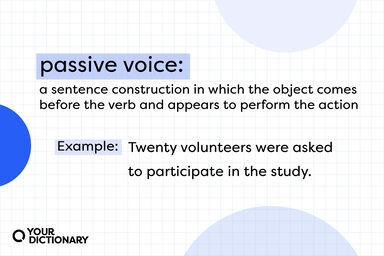Passive sentences are a common grammatical structure in the English language. They are used to emphasize the action or the receiver of the action rather than the doer. In a passive sentence, the subject of the sentence is the receiver of the action, while the doer of the action is either not mentioned or is mentioned after the verb.
Passive sentences are often used in formal writing, scientific reports, and when the doer of the action is not important or known. Understanding how to form and use passive sentences can help you communicate effectively in various contexts.
Example of a Passive Sentence
One example of a passive sentence is: “The cake was baked by Sarah.” In this sentence, the subject “The cake” is the receiver of the action, which is being baked. The doer of the action, Sarah, is mentioned after the verb “was baked.” This sentence structure allows the focus to be on the cake rather than on Sarah.
Passive sentences can also be formed by using the auxiliary verb “be” followed by the past participle of the main verb. For example, “The report will be submitted tomorrow” or “The book has been read by many people.”
While passive sentences can be useful in certain situations, it is important not to overuse them. Using passive voice too frequently can make your writing sound awkward and unclear. It is generally recommended to use active voice for most writing, as it is more direct and engaging for the reader.
However, passive sentences can be particularly useful when the doer of the action is unknown or when the focus of the sentence should be on the receiver of the action. By understanding how to form and use passive sentences effectively, you can enhance the clarity and impact of your writing.
In conclusion, passive sentences are a valuable tool in the English language for emphasizing the receiver of an action or when the doer of the action is not the focus. By incorporating passive sentences strategically in your writing, you can convey your message more effectively and engage your readers. Remember to use passive voice thoughtfully and balance it with active voice for clear and engaging communication.
